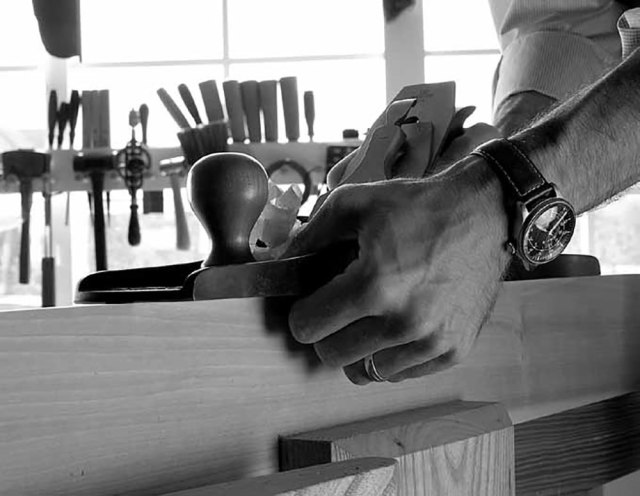
This is an excerpt from “The Art of Joinery” by Joseph Moxon; commentary by Christopher Schwarz.
Now we get to the fun part: Putting the tools to use. Moxon’s first “exercise” is to plane a large piece of wood square to transform it from a rough pitsawn board to a piece of finished work. Below is my reading of Moxon’s method. There are some steps missing that might be familiar to modern hand-tool users, such as checking for twist with winding sticks. Moxon confirms the board is true by eye (just wink) and with a ruler that is anywhere from 2′ to 7′ long. Your eye (and a 7′ ruler) are powerful measuring devices, though I prefer winding sticks for high-tolerance work.
Step One: True One Face
You begin with the fore plane and set it so it will take a shaving that is the thickness “of an old coined shilling,” a bit more than 1∕ 32″ thick. If the grain is difficult, reduce the cut to “the thickness of an old groat,” or less than 1∕ 32″. If the board is warped or cupped, you need to plane across the grain – what Moxon calls “traversing” – to bring the high spots down to the low spots on your first face.
Moxon says you should check your work by sighting down the face of the board either with one eye, with a 2′-long ruler or with a piece of straight stock that is as long as the piece you are working.
When the first face is flat, you should refine the face a bit. First set the fore plane to a lighter shaving and plane the board. Then use a jointer plane. Traverse across the grain for wide panels or work at angles – corner to-corner – for narrow stock. Then finish that first face with a smoothing plane if necessary. Work with the grain; overlap your strokes.
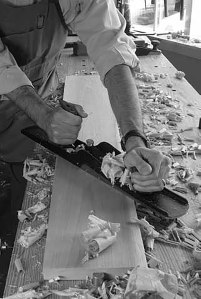

Step Two: Straighten One Edge
Next you should straighten one long edge. Use a try square to find the high spots (called the “risings”) on the edge. Reduce these with a fore plane or (in extreme cases) with a hatchet, Moxon writes. (Some woodworkers might use a drawknife or scrub plane here.) Follow this up with a jointer plane and smoothing plane.
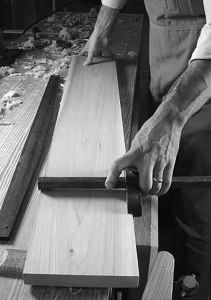
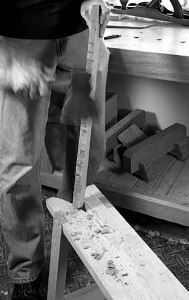
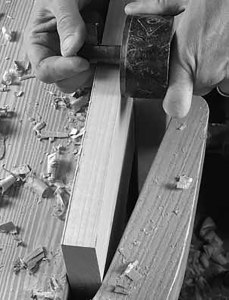
Step Three: Work the Other Edge
Now use a marking gauge or panel gauge to scribe the finished width of the board. The gauge’s head rides on the finished edge and marks a line parallel to it. You also should strike this same line on the rough face. Now work this edge down to your scribe line. Use a hatchet if you have lots of material to remove; or use a fore, jointer and smoothing plane if there isn’t much waste.
Step Four: The Final Face
With one face and two edges completed, use your marking gauge to scribe the finished thickness on your two completed edges. Press the gauge firmly against your first face to make these marks. Then use a fore, jointer and smoothing plane to dress the fourth face.
— MB